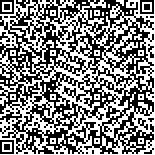| 摘要: |
| 大西洋经向翻转环流(Atlantic meridional overturning circulation,AMOC)作为全球大洋的极向热量输送带,对大西洋附近区域的天气及全球气候变化都存在至关重要的影响。采用自然资源部第一海洋研究所研发的地球系统模式FIO-ESM v2.0(First Institute of Oceanography-earth system model version 2.0)分析了1850~2014年AMOC的空间分布特征及时间变化规律,并进一步讨论造成该变化的可能因素。研究结果表明:1850~2014年AMOC最大值出现在40°N、1 000 m深度附近,其时间序列总体呈现-0.079 1×106 m3/(s·a)的减弱趋势,该期间伴随着Labrador、Irminger海域冬季混合层深度的变浅。通过将模式计算的AMOC强度与RAPID (rapid climate change programme)和OSNAP (overturning in the subpolar North Atlantic program)观测资料进行对比,结合模式间并行比较结果显示该模式能较好地再现观测数据期间的AMOC变化规律。FIO-ESM v2.0模式模拟的AMOC具有55 a左右的年代际周期,Labrador、Irminger海域冬季混合层深度变化揭示的对流变化以及Labrador、GIN海域表层海水密度变化造成的海水下沉对AMOC强度的周期性振荡贡献较明显,其周期性变化与海表盐度(sea surface salinity,SSS)、海表温度(sea surface temperature,SST)、蒸发与降水的差值、北大西洋涛动(North Atlantic oscillation,NAO)等要素的变化密切相关。 |
| 关键词: 大西洋经向翻转环流(Atlantic meridional overturning circulation, AMOC) FIO-ESM v2.0模式 AMOC指数 |
| DOI:10.11693/hyhz20211200309 |
| 分类号:P731 |
| 基金项目:自然资源部海洋环境科学与数值模拟重点实验室开放基金项目,2020-ZD-02号;国家重点研发计划,2017YFA0604100号。 |
|
| INVESTIGATING CHANGES IN ATLANTIC MERIDIONAL OVERTURNING CIRCULATION FROM 1850 TO 2014 BASED ON FIO-ESM v2.0 SIMULATIONS |
|
CAO Qian1,2,3, DONG Chang-Ming1,2,4, XIA Chang-Shui3,4
|
|
1.School of Marine Sciences, Nanjing University of Information Science & Technology, Nanjing 210044, China;2.Southern Laboratory of Ocean Science and Engineering, Zhuhai 519000, China;3.First Institute of Oceanography, Ministry of Natural Resources, Qingdao 266061, China;4.Laboratory for Regional Oceanography and Numerical Modeling, Pilot National Laboratory for Marine Science and Technology (Qingdao), Qingdao 266237, China
|
| Abstract: |
| The Atlantic Meridional Overturning Circulation (AMOC) is an extremely important polar heat transport belt that has crucial effects on both Atlantic Ocean weather, and global climate change. The spatial distribution characteristics and temporal changes of the AMOC from 1850 to 2014 was analyzed using the First Institute of Oceanography-Earth System Model version 2.0 (FIO-ESM v2.0) that is developed by the First Institute of Oceanography of the Chinese Ministry of Natural Resources. Possible reasons for this change are discussed. Results show that the maximum value of the AMOC index from 1850 to 2014 appears near 40°N at depth of 1 000 m, and shows a weakening trend of approximately 0.079 1×106 m3/s per year. In addition, shallowing of mixed layer depth in winter in Labrador and Irminger Seas during the weakening of AMOC index was observed. The calculated AMOC intensities were compared with the Rapid Climate Change Programme (RAPID) and Overturning in the Subpolar North Atlantic Program (OSNAP) observations. Results highlight that the model is well suited to reproduce changes in AMOC over the study period. The AMOC simulation results have an interdecadal cycle of about 55 years. The convective changes were revealed by changes in the Labrador and Irminger Seas winter mixed layer depths. Changes in surface seawater densities in the Labrador and the Greenland-Iceland-Norwegian (GIN) Seas contribute apparently to the periodic oscillation of AMOC intensity. These periodic changes are directly interconnected with the changes in sea surface salinity, sea surface temperature, difference between evaporation and precipitation, North Atlantic Oscillation, and other factors. |
| Key words: Atlantic meridional overturning circulation (AMOC) FIO-ESM v2.0 AMOC index |
